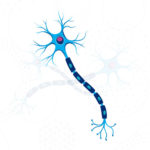Making autism evaluations accessible: Boston Children’s tests virtual options

Many obstacles can delay a diagnosis of autism in children, including language barriers, waiting lists for evaluation, and access to care.
At Boston Children’s Hospital, pediatrician Corinna Rea, MD, MPH, and her research team at Boston Children’s Primary Care are re-thinking the autism evaluation process to improve patient care.
How the pandemic influenced a new way of diagnosing
“One of the largest problems we’ve been seeing with autism diagnoses in primary care across the nation is that it’s taking a long time for patients to be seen for an initial evaluation,” says Rea. “For many families who need an autism evaluation for their child, they’re often met with significant roadblocks. Once it’s determined that their child needs an autism evaluation, they could be placed on a long waiting list to be seen — further delaying care and adding stress to the already overwhelming process.”
To add to the additional wait times, many families who are looking for autism evaluations face language barriers or have difficulty completing lengthy intake paperwork. They have shared with Rea that they’ve had challenges obtaining the proper services for their child.
To tackle this, Rea and her team began thinking about ways to provide accessible care for patient families — not only those who don’t speak English or have limited English literacy, but for all families seeking a prompt autism diagnosis.
Rea’s team received a grant to pilot a new diagnostic model, which is based on some of the lessons she and her team learned during the COVID-19 pandemic. “We weren’t seeing patients in person for evaluations during the pandemic, leading us to explore ways to perform virtual evaluations,” she explains. Inspired by a virtual observational assessment tool developed by Vanderbilt University, Rea and her team developed a fast-track virtual diagnosis method to diagnose children under the age of 3 with autism.
Meeting with families where they are
If a primary care provider (PCP) suspects a child may have autism, they fill out a structured referral document, which is then submitted to the team’s autism project coordinator through an electronic medical record. The project coordinator contacts families to schedule a virtual assessment with them and determine if interpreter services are needed.
“Our project coordinator has been trained to administer the TELE-ASD-PEDS and will also use the Bayley4 Social-Emotional and Adaptive Behavior scale to measure the child’s social-emotional and adaptive functioning,” explains Rea. “When she meets with the families over Zoom, she records the meeting and then sends it to an experienced psychologist who reviews the patient’s responses and provides a report for the PCP.”
If the psychologist cannot definitively diagnose the child with autism, the child is then placed on a list to be seen in person for additional testing. For children who are diagnosed with autism through this virtual method, the team provides a template for PCPs to use to walk through the diagnosis with the patient’s family. The clinic also recently hired an Autism Patient Navigator through a separate grant to provide education and help families connect with services.
For families who are non-English speaking, Rea’s team has translated materials and uses interpreters to conduct assessments, and the project coordinator also speaks Spanish. “If a family does not speak English and wants to have their child virtually evaluated for autism, our project coordinator can perform the assessment with an interpreter,” explains Rea. “We provide resources that are currently available in both English and Spanish, and we’re working towards expanding these services as we continue adapting this model of virtual evaluation.”
Being able to diagnose patients earlier means that these children can receive Applied Behavior Analysis, the main therapy for children with autism, much sooner. “We don’t want children waiting a year to get services they need now,” shares Rea.
Virtual screening is only the beginning
Since last October, the team has received over 80 referrals for this virtual evaluation model. “Our goal is to evaluate patients within six weeks of referral, and we’ve actually been able to see a lot of the patients by the four-week mark, which is incredible,” says Rea. “The response has been positive overall from families, too.”
Currently, only PCPs within the Boston Children’s Primary Care network can refer patients for this virtual evaluation method, but the goal is to expand the service in the future. “We’ve been seeing patients from all language backgrounds as well as those with medical complexity, so we’re really eager to minimize as many barriers as possible to get children evaluated and treated sooner.”
Learn more about the Children’s Hospital Primary Care Center here.
Related Posts :
-

New technique yields potential treatment for a common cause of autism
Since 2008, we have known that the 16p11.2 chromosomal region is linked with autism spectrum disorder (ASD). Now, researchers from Boston ...
-

‘Mosaic’ gene mutations could explain some cases of autism
The causes of autism remain mysterious. Scientists have linked autism spectrum disorder to a long list of genes, but most ...
-

Rethinking the need for ADOS testing to diagnose autism in young children
The Autism Diagnostic Observation Schedule, or ADOS testing, was developed in the 1980s as a tool for autism research. Through ...
-

CRUSH: Developing a sexual education program for young adults on the autism spectrum
For many young adults on the autism spectrum, developing and maintaining positive intimate relationships can be challenging. But collaboration between ...





